In the weaving process, two separate sets of yards interweave to create the final cloth. Threads are weaved over and beneath each other to create a finished fabric, known as weaving. Weaving is a great artistic statement that employs threads. You can see some of the world’s most famous weaves in museums and historic buildings. They serve as great pieces of ornament.
Cloth weaving has been around for thousands of years, but Industrialization improved and enhanced this skill to a great extent. Weaving designs, styles, thicknesses, resilience, and fall are all different in current cloth weaves. Understanding fabric weave patterns may make a significant impact on the final product.
Here is a good video to learn about the basic fabric weaves available today.
Table of Contents
Understanding 20 Different Types of Weave
Below are twenty different types of fabric weaving patterns and their detailed descriptions. So read on to know more about textile weaves and processes related to them.
Plain weave
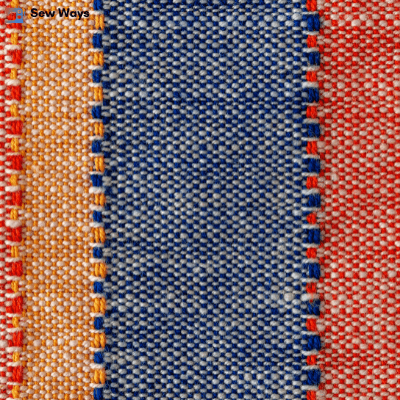
Plain weave, also called tabby weave or basic weave, is a piece of fabric in which all the strands of thread run perpendicularly. Looking carefully at this weaving structure, the woven cloth will seem like a checkered pattern of continuous interwoven threads running, like weaved baskets.
Examples of simple fabric weaves include flannel, chiffon, and organdy. Plain weave fabrics are robust and dependable and they find their use in various purposes, including apparel and furniture. Weave patterns that differ somewhat from the standard plain weave include basket weave and rib weave.
In general, plain weaves are very long-lasting and resistant to pilling. It’s simple to sew basic woven fabric without gathering or puckering since it’s typically not flexible.
Satin weave
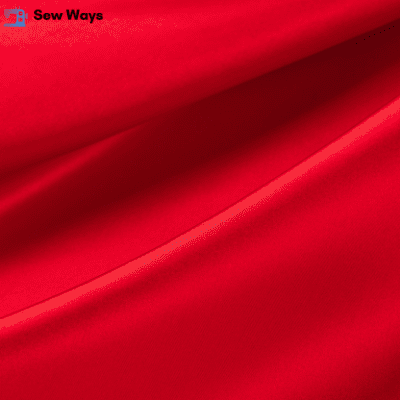
The smooth and exquisite look of the satin weave makes it stand out. There may be four weft strands floating over a single weft yarn in a satin weave. Satin finds its use in wedding dresses, evening attire, and many other things these days, such as ballet slippers. Basically, in a satin weave, there are four or more weft strands that go over one warp yarn.
Satin is not simply another name for a particular weave when it comes to fabric. Several fibers go in its production, making it softer on the skin. When you spread several warp threads over the weft before and then it goes under a warp thread, you end up making a satin weave. Warp yarns are interlaced over weft threads in cloth weaving, or weft thread is more prominent over top of warp threads.
In this pattern, warp strands need to be motionless in a loom, whereas the weaving threads are over and beneath it. We get the final smooth, glossy, and velvety surface by incorporating little interlaces.
Twill Weave
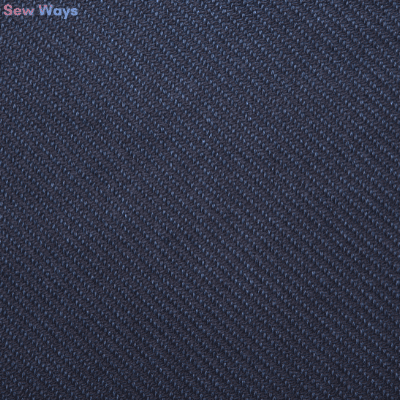
You get a twill weave when a warp thread goes under and over a weft thread many times. It alternates between weaving two or more strands over and under each other. This fabric’s twill weave has a fantastic drape and is robust and delicate at the same time.
The weave provides a diagonal rib design. Denim is by far the most popular twill fabric. It’s worth noting that there are more twill textiles out there, such as velvet, fleece, jersey, and gaberdine.
Changing the breadth and direction of the twill results in a variety of twill pattern variants. In a twill hopsacks, the twill runs right and left, but diagonally, the diagonal weaving is more visible. A wider twill is the cavalry twill, while the whipcord twill is another twill variant.
Rib Weave
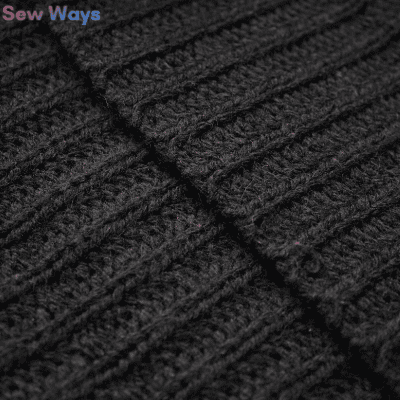
Among different types of fabric weaves, rib weave is a kind of plain weave. This is because it almost has the same procedure as that of the plain weave. The fundamental structure keeps the same sequence of the threads flowing over and under the yarns in the arrangement of one under and the other over it.
Since the warp or weft threads are heavier, it is raised in the weaving. Generally, the weft yarn is raised, and it gives a ribbed look on the cloth. Rib weave is different from plain weave in that it requires just one heavy yarn.
Rib weave textiles may be colored woven to produce stripes or checkered fabrics. They achieve this by utilizing multiple yarns of various colors. Moreover, you can also add finishing to rib weave patterns. Among them are waterproofing and a fire-resistant covering. Among this type of weave pattern, we see cloth varieties such as Grosgrain and Poplin. Poplin was historically created with a silk thread and woolen or worsted weft.
Basket Weave
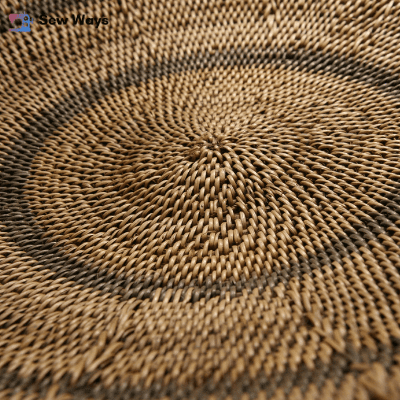
Basket weaving is a basic style of colorful textile weaving. It is a plain weaving that uses two or more weft and warps strands that alternate to create a checkered pattern. The crossing design produces a pattern of check with two or more strands in one cluster distinguishes it from other methods.
In basket weaving, you cluster threads together, but in plain weave. Moreover, you usually organize these in pairs; however, occasionally, you will need to pair or combine more yarns. Moreover, they weave into each so perfectly that they appear a single fiber of yarn. In the end, this results in a cloth that looks like a weaved basket, where the term originated.
It is multifunctional and incredibly absorbent. Basketweave fabrics have loose weaves, which is why they are so permeable to air. It is different from plain weave as it demands an explosion of colors that might liven up your energy without being overly excessive.
Herringbone Weave
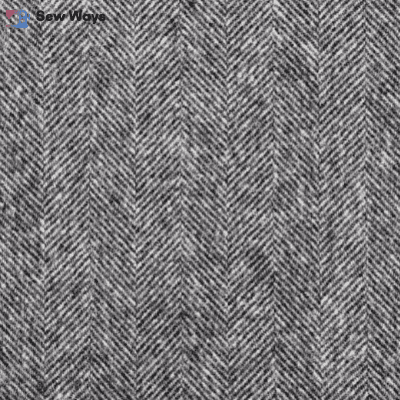
The herringbone weaving pattern is a little different from the twill weave pattern. In this type of fabric weaves, there are alternate twills. Therefore, we also call this weave broken twill. When producing a twill weave, you repeat a diagonal pattern continuously in one dimension.
However, with a herringbone weave, the only thing you need to do is to change the direction of the weave. In the end, you’ll get a design that looks like the bone of a herring. This change in design is an attractive pattern with incredible adaptability that appears great with almost anything.
The herringbone weave in the fabric is a tremendous hit when it comes to tailoring. When designing an outfit, you will often see the usage of this type of fabric pattern. Even though most often wool goes into the production of this weave, you will also find it in a wide variety of other materials, including cotton and linens. It is highly adaptable, delivering volume and texture without being expensive.
Sateen Weave
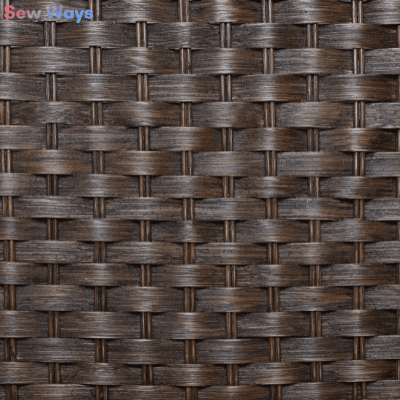
Sateen is a kind of fabric that has a weft-faced weave. In this, the front is silky, but the backside is rough and thick. Smooth-faced material like sateen is produced by weaving warp and filler threads together. The significant number of floating on a sateen fabric contributes to the fabric’s high shine.
You will find sateen weaves in smooth, and shiny fabrics. This is because the adjoining threads’ floats obscure the interlacing sites. Twisted yarns give sateen fabric its shine, and the greater the twist, the more lustrous the material will be.
Leno Weave
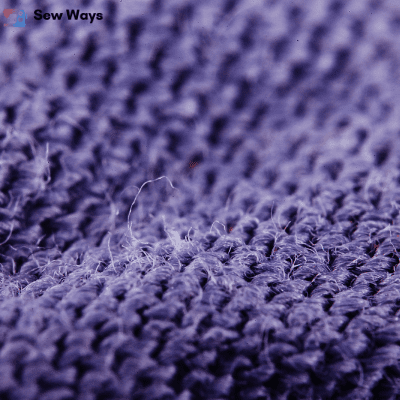
Among different weave fabrics, leno weave produces a cloth with an open weave. It manages to be both stable and open at the same time. We get leno weave warp threads by twisting two separate yarns around each other. These threads essentially produce a helix-like pattern.
The weft strands are intertwined via the gaps generated in the twisted warp threads. Locking the interlaced warp and weft strands in place is achieved with a loom hook known as a “Doup.”
Fabrics you will see from the leno weave include Gauzes, Nets, and Tulle, among many others. Silk is the most popular fiber you will see in Leno weave textiles; however other fibers also have their use in this type of fabric weaves.
Oxford Weave
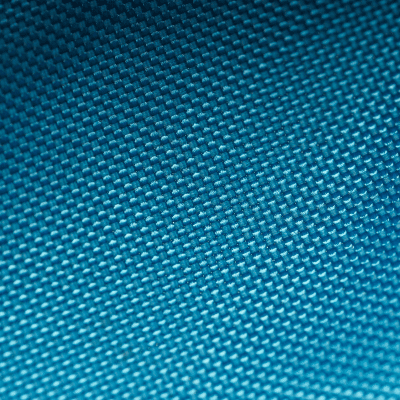
We see the first introduction of the Oxford weave in the late 18th century in England. It is essentially a version of the Basketweave and employs a multicolored weft and a white warp. This provides a slight basket appearance with whitish tones.
In this weave, we see the usage of a wide variety of different thickness yarns. Initially, Oxford weave was created mainly using cotton, but presently many different fibers are incorporated, such as polyester, viscose, and other synthesized materials.
Oxford weave also commonly utilizes a thin yarn in one column and a heavier filler yarn in another. This uneven design implies that the more delicate strands are likely to break. This, in turn, generates tiny pores in the cloth, and this distinguishes Oxford weave from others. Many manufacturers have attempted to reduce the breaking of the strands by twisting them before weaving.
Bedford Cord Weave
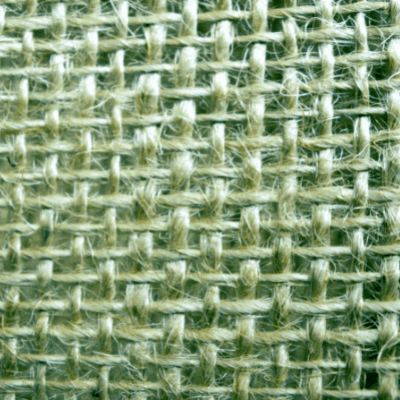
Bedford Cord is a corduroy-like woven fabric. Wool, worsted, or cotton are often used to make it. It is also very stable and durable. It makes a fabric with ribs running throughout its whole length. If you like, you may make the ribs whatever width you choose. It gives the appearance and perception of an uncut, straggly corduroy.
Corduroy’s distinctive wales are absent from this weave, but the ridges are still visible down the lengths of the fabric. It may look like a pattern of thin stripes separated by narrow lines in specific lighting.
There are several uses for this fabric, including furnishings and labor clothing. Wrapped-faced fabric is Bedford’s signature look. As a result, this cloth is only visually appealing from the front with a simple front. This fabric’s durability and longevity are inherent, thanks to its similarity to Corduroy and its construction materials.
Waffle Weave
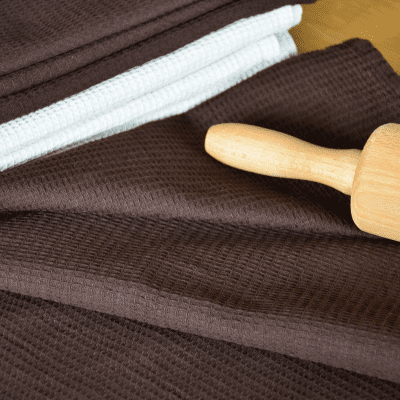
Waffle weave is a kind of woven fabric with unique recessed squares that give it the appearance of the famous American breakfast meal, after which it is named. Even though you can’t eat it, it’s a need in cold weather apparel since it makes you feel warm. Honeycomb is another name for Waffle weave. Waffle weave finds its use in almost everything from bathrobes to blankets to towels.
Basically, weft and warp threads of various lengths intersperse with plain-weave lines to create the waffle effect. This waffle-like texture is created when the cloth is rinsed after being removed from the loom. Towels with waffle weave patterns are famous because of their absorption and aesthetic appeal.
Pile Weave
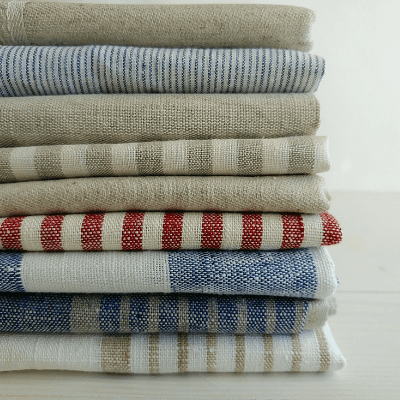
Pile weaving is a popular kind of textile weave. It is a common method that incorporates soft but robust materials. You will also see this type of fabric weaves in furnishing clothes and carpets. To achieve the softness of this fabric, many layers go into its construction.
Like other weave fabrics, you create the pile weave on a loom. You get the loops in the threads when the fibers over metallic rods or lines. In this technique, a pile fabric links to a base cloth. This serves as the pile’s base layer and holds the material together.
There are various ways to weave in these filler yarns, and we can incorporate them into warp or weft. Basically, fabric loops appear after the removal of metallic bars. Depending on the material, you can leave these loops uncut, as in terry toweling, or trim them to a consistent size, as in velvet.
Pile weave may also use many different fibers including cotton, silk, and wool. Moreover, nowadays, synthetic fibers find their use in this pattern to create garments with diverse qualities.
Jacquard Weave
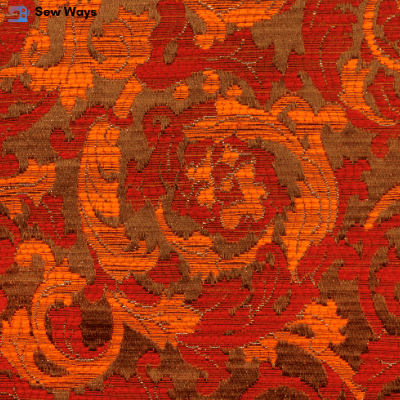
The weaving process used to create the cloth is referred to as jacquard. Horizontal threads pass under and over warp threads to produce a crisscross yarn pattern in all weaving procedures.
When it comes to Jacquard weaving, the fundamental process is still there but with an exciting twist. You can make fabrics unique patterns by picking a weave design that combines the proportion of over and under threads. Therefore, it’s possible to create interesting patterns in fabric by utilizing strands of various colors and then selecting which threads display on top of each other similarly.
Jacquard weaving combines pre-determined weave designs and numerous colored strings at once to construct a stunning design with a delicate touch and a tapestry-like finishing. Jacquard weaving allows creating more complex patterns quickly and easily after the basic designing and preparations processes, opposing the traditional weaving techniques.
Crepe weave
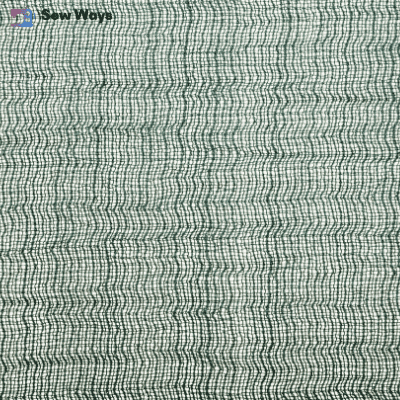
Among different types of weave, crepe weave is any weaving that results in a broken, uneven look on the fabric’s surface. The rough, uneven texture is commonly achieved by utilizing specifically produced warp yarns and weft yarns with a higher twisting ratio that allows it to crimp or curl while the cloth is being completed.
Basically, you can create a crêpe weave from practically any fiber, either raw or synthetic. All crepe fabrics would have deliberately wrinkly textures, producing this effect in several production processes. Crepe may be a woven cloth or knitted fabric. The materials and the methods which create the texture characterize different kinds of crepe.
Lappet Weave
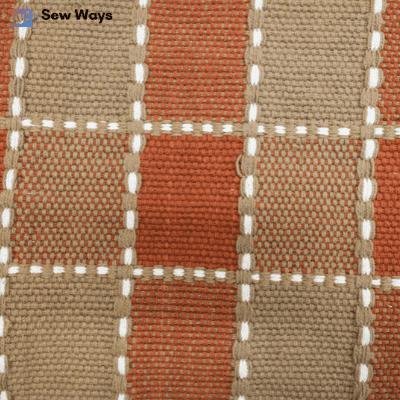
Lappet-Weaving is a technique that finds its use in forming shapes and designs on the fabric’s surface by using needles set in a movable frame. The frame gets the name of lappet-frame, which includes a moving bar containing needles, each with a distinct strand for creating specific colors in the design.
The bars are lifted as necessary by the movement of a roller slotted as per the design to be generated. Occasionally, there is the usage of two or more bars concurrently to create weft patterns with multiple colors.
Tapestry Weave
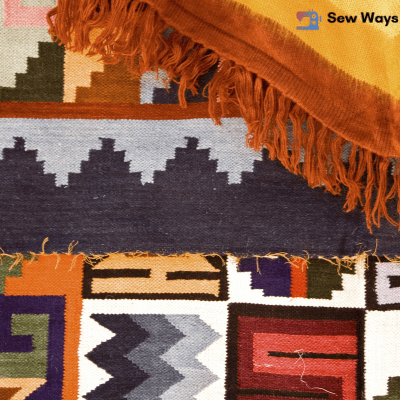
Tapestry weave is a kind of medieval textiles art woven on a loom. It is woven using a mixture of multicolored weft yarn intertwined with the warp to make a unique design. In most tapestries, the weft covers numerous warp threads.
This makes the tapestry weave a little weak and unstable. However, what makes this weave stand out is its elegance. It does It is not bound to colors or designs. This aspect boosts its quality since the outcome of every tapestry weave is a particular piece of artwork.
Tapestry weave is a hand-worked technique that utilizes one or more strands that aren’t the same length as the warp to make rows of finely woven clothes.
Striped Weave
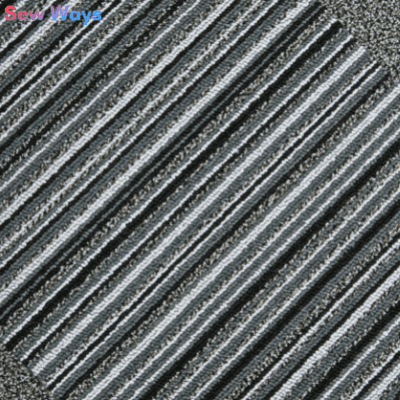
A striped weave cloth has a variety of various stripe patterns. For instance, a pinstripe is a singular, thin striped thread running the length of a piece of clothing. It is possible to create an Eton stripe by weaving alternating lighter and darker weft and warp threads together. A hairline weave is another name for this kind of weave.
Checkered Weave
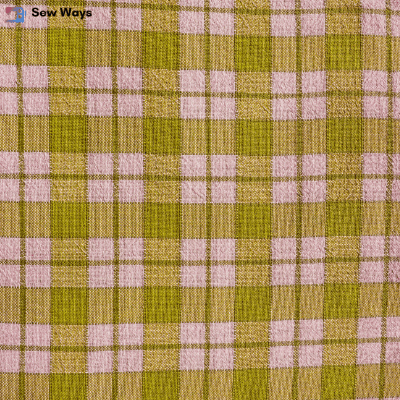
The checkered weave produces attractive checks on the cloth. There are various varieties of this fabric weave pattern. Blocks check appears like a succession of blocks in dark and bright hues of the yarns utilize diamonds weave, a twill weave with the left and right twills appearing like a diamond shape.
In Glenurquhart check, there is a twill pattern with alternating lighter and darker warp threads. Moreover, there are a dog’s teeth checked and a gun club check. This weave pattern finds its usage in making many tartan variants, plaid, and checks.
Double Cloth Weave
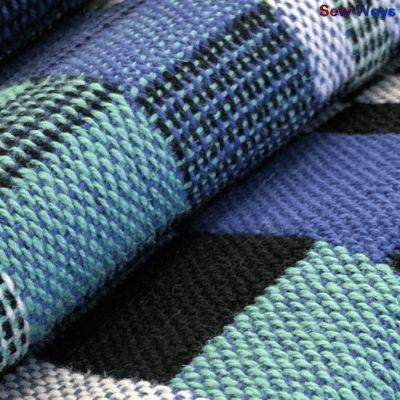
Of weave fabrics, as the name indicates, you get a double cloth weave by the usage of double layers of fabric. The two layers are sewn up with the assistance of several interlacing points at the time of front and rear threads. Double cloth weave uses two sets of wefts and two sets of warps.
Using a single-beam let-off action on a loom, it is feasible to weave a double cloth weave. They are almost identical when it comes to the pattern to make per repetition of front and backside weave and yarn counts for both warps.
Dobby Weave
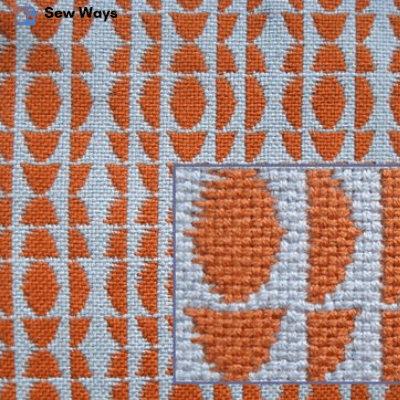
The dobby weave employs a particular machine to produce its distinctive design. The machine lifts a few warp threads and brings down parts of the weft threads.
This typically makes a cloth that seems like it has small dots stitched on the front. This process is implemented by managing the warp strands in the fabric. This weave pattern is comparable to jacquard since this requires an extension for the looms to generate these motifs. However, the patterns you get on a Dobby loom are significantly more straightforward than those from on a Jacquard loom.
Conclusion
You can weave yarn in countless distinct ways. Moreover, we see a lot of diversification in textile weaves. It’s vital to learn everything regarding what kind of fabric incorporates since they may affect the softness, texture, strength, stability, tear toughness, and drape of the material. These determine the purpose you are going to use weave fabrics for.
To a large extent, the quality of your fabric’s weave determines how well your stitching job turns out to be. So, hopefully, after this piece on different fabric weaving patterns, we hope you have good information on them and can distinguish them from each other

